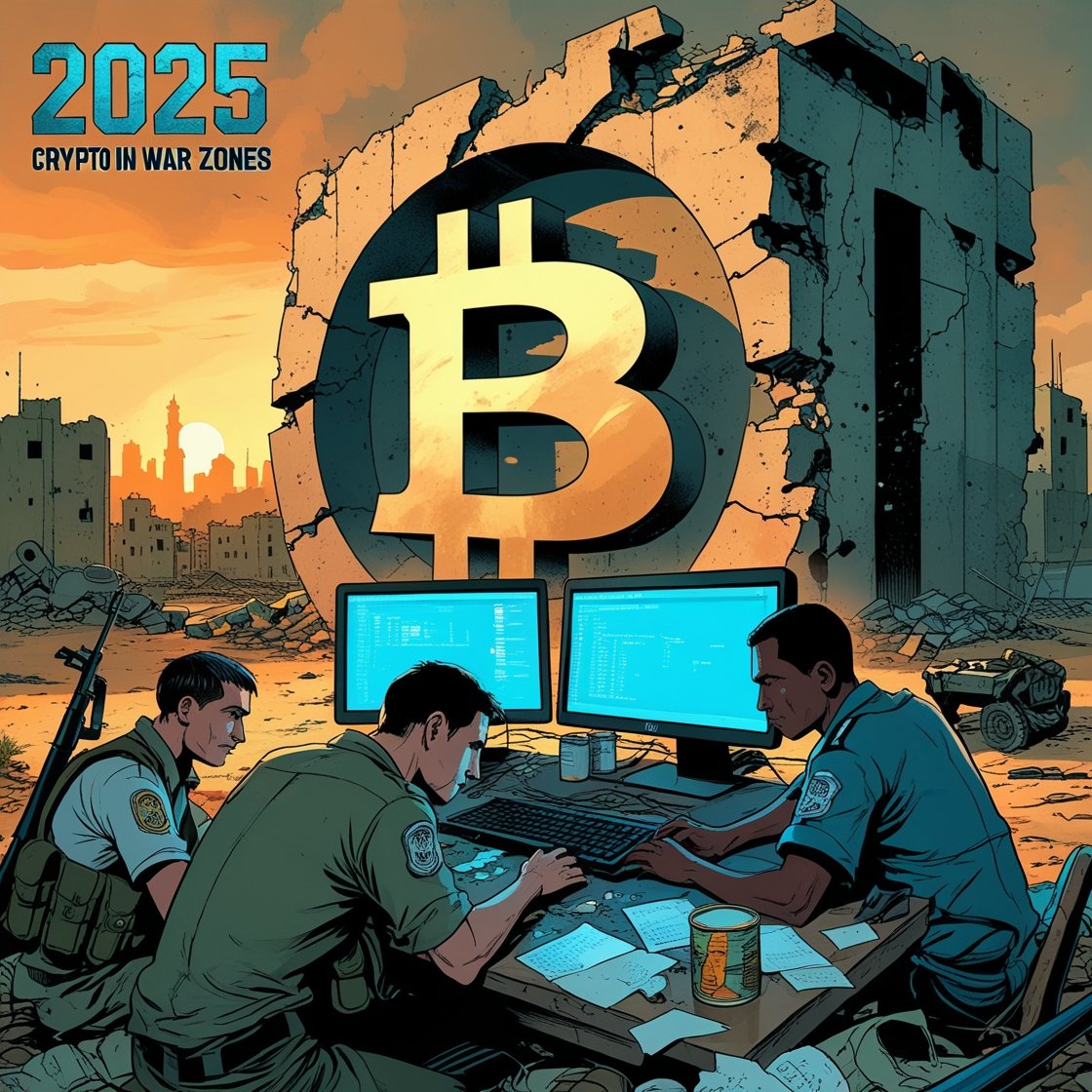Introduction: Bitcoin’s Lifeline in Conflict
In 2025, Bitcoin’s price surge to $150,000 isn’t just a headline for investors—it’s a matter of survival in the world’s most dangerous war zones.
When traditional banks collapse, currencies hyperinflate, and sanctions cut off entire nations from global finance, civilians, soldiers, and activists are turning to Bitcoin. From Ukraine’s battlefields to Sudan’s famine-stricken markets, crypto has evolved from a niche asset to a critical tool for resistance, remittances, and humanitarian aid.
This is the untold story of how Bitcoin is rewriting the rules of war economies in 2025.
1. Why War Zones Turn to Bitcoin
The Failure of Traditional Finance
In conflict zones, national currencies often become worthless overnight. Sudan’s pound has lost 99% of its value since 2020; in 2025, a loaf of bread costs 50,000 Sudanese pounds—or 0.0002 BTC. Banks shutter, ATMs run dry, and international payment systems (like SWIFT) freeze transactions.
Bitcoin’s appeal is simple:
- No borders: A refugee can carry life savings via a 12-word seed phrase.
- No inflation: Fixed supply prevents governments from printing away wealth.
- No permission needed: Sanctioned entities (like North Korean hackers or Ukrainian militias) can still transact.
The Rise of Guerrilla Economics
NGOs now use Bitcoin to deliver aid faster. In 2024, the UN reported that 17% of aid to Sudan was crypto-based, avoiding bureaucratic delays. Meanwhile, paramilitary groups trade Bitcoin for weapons on encrypted messaging apps like Telegram.
“In a war, cash is a liability. Bitcoin is silent, global, and unstoppable.”
— Yuri Mykolenko, ex-Ukrainian military, now Bitcoin educator
2. Ukraine: From Donations to National Strategy
Phase 1: The 2022 Crypto Donation Boom
When Russia invaded, Ukraine received over $200M in crypto donations—mostly Bitcoin and Ethereum funding everything from bulletproof vests to satellite internet.
Phase 2: Legalizing Bitcoin (2024)
By 2024, Ukraine’s government formally recognized Bitcoin as legal tender for certain transactions. The hryvnia had collapsed, and crypto was the workaround:
- Military suppliers were paid in BTC to avoid bank freezes.
- Citizens used Lightning Network wallets to buy groceries during blackouts.
Phase 3: The 2025 Drone Warfare Market
Ukraine’s “IT Army” now crowdsources drone strikes via Bitcoin microtransactions. A $150 BTC donation buys a grenade drop; $1,000 funds a reconnaissance drone.
“We’re fighting a 21st-century war with 21st-century money.”
— Serhii K., Ukrainian drone unit coordinator (anonymous)
3. Sudan: Bitcoin Amid Famine and Civil War
The Banking Collapse
Sudan’s civil war has decimated its financial system. In 2025, less than 10% of banks are operational. The Sudanese pound is nearly worthless, and Western Union charges 30% fees for remittances.
The P2P Bitcoin Economy
- Refugees trade BTC for food in Telegram groups.
- Diaspora workers send crypto home—$20M in BTC remittances flowed to Sudan in Q1 2025.
- Miners use solar panels to generate BTC during frequent power outages.
The Dark Side: Warlords and Scams
Not all adoption is noble. Militias extort Bitcoin from civilians, and “P2P traders” scam desperate families. Yet for many, the risks beat starvation.
“My phone wallet is my bank now. If the militia comes, I swallow the SIM card.”
— Anonymous Sudanese merchant
4. Other Conflict Zones: Myanmar, Gaza, Venezuela
Myanmar: Bitcoin vs. the Junta
After the 2021 coup, Myanmar’s military banned VPNs and foreign currencies. Activists now use:
- Monero for anonymous donations.
- BTC mining to fund resistance media.
Gaza: Crypto Under Blockade
Hamas once relied on crypto (prompting Israel’s 2023 crackdown). In 2025, civilians use USDT to buy Egyptian imports via underground tunnels.
Venezuela: Petro Failed, Bitcoin Won
Maduro’s “Petro” crypto flopped, but BTC P2P volume hit $15M/week in 2025. Citizens trade oil vouchers for Bitcoin on LocalBitcoins.
5. Risks & Ethical Debates
Sanctions Evasion
The U.S. Treasury warns that Bitcoin funds militants. In 2024, Hamas received $90M in crypto before Israel froze wallets.
Volatility Dangers
A 20% BTC drop can wipe out a refugee’s savings. Stablecoins like USDT are preferred but require internet access.
Surveillance State Fights Back
Chainalysis helps governments track “illegal” crypto flows. Sudan’s regime now arrests P2P traders.
Conclusion: Bitcoin’s Dual Role in 2025
Bitcoin in war zones isn’t just about money—it’s about power. It funds both resistance and repression, humanitarian aid and weapons deals.
As one Ukrainian volunteer put it: “We don’t care if Bitcoin hits $150K or $1. We care that it works when nothing else does.”
The question for 2026? Whether the UN will adopt Bitcoin for aid—or if governments will outlaw it as a threat.i





